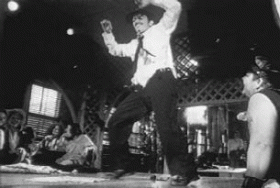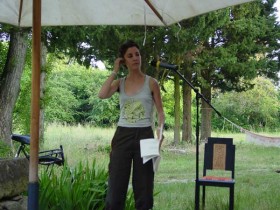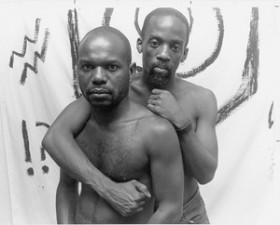An outwardly fragile and introspective man named Simon (Stanislas Merhar) stands in a darkened room poring over an audioless film footage of a group of holiday revelers at a seaside resort in Normandy. Repeatedly cueing the film to the excerpt of a beautiful young woman, Ariane (Sylvie Testud) and a friend, Andrée (Olivia Bonamy) overlooking the beach, Simon attempts to decipher Ariane’s passing comment, concluding that her inaudible articulation to an unseen, off-camera listener must have been “I really like you”.
The enigmatic and curiously alienated prologue provides an insightful, yet forbidding glimpse into the relationship between the reclusive Simon and his lover Ariane: an obsession that is also manifested in the image of Simon trailing behind the oblivious Ariane as she drives alone to a secluded residential hotel (in a slow, labyrinthine pursuit that pays homage to Alfred Hitchcock’s Vertigo). Relegated to a life indoors due to chronic allergies and the entrusted care of a frail, elderly grandmother (Françoise Bertin), Simon has brought the seemingly acquiescent Ariane into his suffocating, insular household where he has furnished an adjacent room for her so that he may summon her at his discretion (deriving profound intimacy from observing her sleep), and has made arrangements with Andrée, an accommodating and trustworthy mutual friend (and reliable spy), to accompany her on brief excursions into town to stave off boredom and restlessness. However, as Simon becomes increasingly suspicious of Ariane’s time consuming personal activities and mystified by her complacent inscrutability, he embarks on a consuming and ultimately destructive quest to possess his elusive lover completely.
Perhaps the most Bressonian of Chantal Akerman’s minimalist and dedramatized cinema (most notably, in the bookend structure and psychological deconstruction of A Gentle Woman), La Captive is an elegantly sinuous and provocative exploration of obsession, madness, and intimacy. Although inspired by Marcel Proust’s La Prisonnière, the fifth volume of his epic masterwork In Search of Lost Time, Akerman distills the lush texturality and baroque elements of Proust to create a spare and essential portrait that nevertheless retains the thematic density and emotional ambiguity of the psychological novel. From the estranged opening sequence as Simon studies a celluloid image and speaks for a silent and physically absent Ariane, Akerman establishes the film’s subjective point of view and implicit objectification of – and control over – a voiceless (or more appropriately, silenced) Ariane. Visually, Akerman further reflects Simon’s literal projection of Ariane through disorienting images of converging and diverging shadows cast on anonymous streets and an unfinished alabaster sculpture at an empty museum that represents both idealized perfection and dimensional incompletion. Moreover, Simon’s perception of Ariane’s untenable opacity is subsequently illustrated through an oddly distanced, non-coital sexual encounter between Simon and an unconscious Ariane – her impenetrable thoughts occluded by sleep. By presenting psychological interiority through an overarching narrative circularity and incorporating visually austere and oppressively isolating landscapes, Akerman creates a haunting and irresolvable odyssey of possession, passion, disconnection, and myopia.
*Chantal Akerman (1950, Belguim), is a filmmaker, writer, actor, producer and composer, and one of the most important European directors of her generation. As a teenager, she saw Godard’s Pierot le fou and realized that filmmaking could be personal and experimental. Akerman started making her own films in the late ’60s and gave a new meaning to the term “independent film” as an embodiment of pure independence and creativity.
Akerman has made over 40 works – from 35mm features to video essays to experimental documentaries, including Jeanne Dielman, 23 Quai du Commerce, 1080 Bruxelles; Saute my ville (Blow up my town); News from Home; Les Rendez-vous d ‘Anna; Je, tu, il, elle; Window Shopping; Toute une nuit (All night long); Les Annèes 80 (The Eighties); Nuit et jour (Night and Day); D’Est (From the East); Portrait d’une jeune fille de la fin des annèes 60 à Bruxelles (Portrait of a Young Girl at the End of the1960s in Brussels); Un Divan à New York (A Couch in New York); and most recently, Sud and La Captive. In 1995 Akerman began experimenting with video installations and exhibiting her work in museums and galleries as well as in art-house theaters. Her video installations, last exhibited at the Venice Art Biennale 2001 and Kassel Documenta 2002, and documentaries display an intensive personal gaze, most notably in Selfportrait / Autobiography: Work in Progress.




